#Ancient Asia
Explore tagged Tumblr posts
Note
Can you do Syaoran Li from Cardcaptor Sakura please and make sure that you will take your time okay cool beans!!!










Syaoran Li (Cardcaptor Sakura)
#livi’s moodboards#aesthetic#moodboards#moodboard#anime#white#black#green#dark green#gold#syaoran li#Cardcaptor#cardcaptor sakura#cardcaptor clear card#clear card#yin Yang#bamboo#ancient Asia#oriental
20 notes
·
View notes
Text

Qijia drum, 2000BC-1700BC, Asia.
8 notes
·
View notes
Text
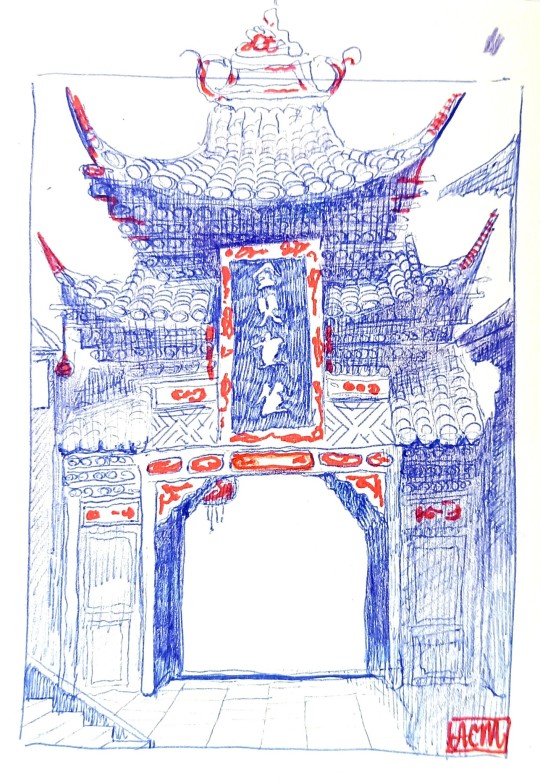
#mine#art#myart#artist on tumblr#traditional art#my art#illustration#artists on tumblr#bic pen#pen art#blue#asia#history#ancientmonuments#ancient asia#i used a ref on pinterest but couldn't find where this is...#architecture#gate#asian architecture#artwork#sketching#colored pencils#doodle#japan#japanese culture#travel#world#red#ink drawing
20 notes
·
View notes
Text

Happy to be able to share new artwork for Epochs: Course of Cultures! This is the city of Chang'an the capital of the Tang Dynasty, where the herald of the Emperor speaks to the citizens of the city.
I think this is the first time I painted a cityscape in such a composition, a big step out of the comfortzone.
Hope you like it!
Best,
JCH
#dungeons and dragons#board games#concept art#fantasy art#tabletop games#digital painting#magic the gathering#character design#ancient history#armor#ancient china#tang dynasty#ancient asia#medieval asia#asian mythology#asian city
25 notes
·
View notes
Text
Dear early archaeologists,
The East exists.
Don’t complain or ignore it. It just does. No one is sorry.
Please do not subjugate it to Western ideals and philosophies. The empires of Asia were some of the most developed and impressive that the world has ever seen. Their political and material culture, especially ceramics and vessels, were internationally renowned and very influential over what you are currently studying.
Please use them as reference in your interpretations of your culture but ESPECIALLY theirs.
#dear early archaeologists#ancient history#ancient asia#material culture#letters to dead people#history#records#history is biased#western culture#western education#eurocentrism
26 notes
·
View notes
Text

The remains of the intricately tattooed body of Apo Annu, a tribal leader from the Benguet province of the Philippines who died more than 500 years ago. Archaeologists believe people from this region earned their tattoos—typically geometric shapes and animals—in battle. Photograph By Gunther Deichmann
The Ancient History of Tattoos—Revealed By Inked-up Mummies
Humans have been getting ink for at least 5,200 years. Here are some of the most intriguing ancient tattoos, from cultic symbols to complex horse motifs.
— By Erin Blakemore | June 5, 2023
If you got a tattoo, what kind of ink would you choose and why? The answer might reflect everything from a spur-of-the-moment decision to a poignant tribute to a loved one. But you may not realize that tattoos have an ancient—and fascinating—history.
The word “tattoo” was imported into English thanks to Captain James Cook, who noted the practice, and Tahitian word “tatau” describing it, in Polynesia in the 18th century. But scholars agree that the practice far predates the word itself—and the skin of ancient mummies proves their point.
Who are these inked-up mummies, and what can they teach us about ancient cultures? Here’s a not-at-all exhaustive look at some of the most intriguing tattoos that archaeologists have found from the past and what they tell us about the ancient world.
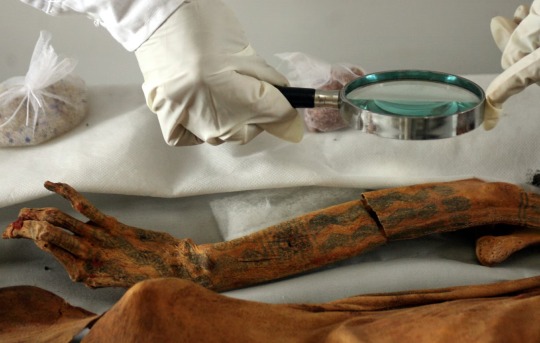
An archaeologist inspects the tattooed arm of a mummy, known as the Lady of Cao, from Peru's ancient Moche culture. This young woman— believed to be member of the Moche elite—died around A.D. 450. Her tattoos of spiders and snakes suggest she was spiritual. Photograph By STR New, Reuters/Redux
Tattoos in Ancient Western Europe
The earliest evidence of tattooing is inked into the body of Ötzi the Iceman. Europe’s most famous mummy, Ötzi (also known as “The Iceman”) was discovered by German hikers in the Alps in 1991. Ötzi lived in Tyrol, a mountainous region that borders modern-day Italy and Switzerland, about 5,200 years ago, and after he died his body, and its tattoos, were preserved by ice and the elements.
Archaeologists have since documented 61 line-like tattoos on his body thought to have been created by piercing the skin and applying charcoal dust. Some of them were on areas associated with pain in aging like the knees and ankles, leading archaeologists to theorize that they were created during some kind of pain treatment. But other geometric tattoos on Ötzi’s chest suggest that tattoos had some kind of ritual, ceremonial, or even religious use as far back as the Neolithic age.
The exact meaning may be debated for the next five millennia, though, since researchers concede that without more evidence, there’s no way to know why Ötzi, or other Neolithic people, got inked.
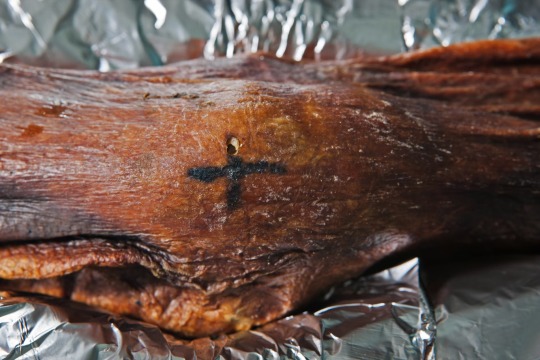
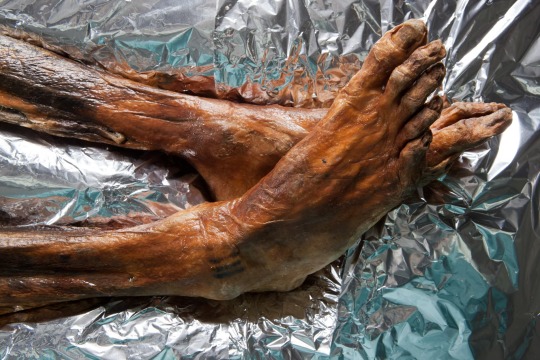
Top: The earliest evidence of tattooing can be found on the body of Ötzi the Iceman. One of those tattoos, found near his knee, is cross-shaped. Bottom: Ötzi also has a series of line-like tattoos on his body that archaeologists have theorized may have something to do with pain treatment or ritual use. Photographs By Robert Clark, National Geographic Image Collection
Tattoos in Ancient Egypt
The next earliest evidence of tattoos comes from mummies thought to have died between 3351 and 3017 B.C. in ancient Egypt. Discovered in 1900, the bodies were found to sport tattoos in 2018, when researchers re-examined them using infrared imaging and found that what looked like smudging on the skin was actually body art. Their ink is the earliest known evidence of tattoos depicting images—including a wild bull and a sheep on the male’s arm, and symbols resembling the letter “S” and possibly a staff on the female’s arm and shoulder.
The images, which mirror motifs found in other ancient Egyptian art, are the first evidence of tattooing in Africa. Though researchers can only speculate on what the tattoos meant to their bearers, they could have been status symbols or proof of the wearer’s skills such as bravery or knowledge of cult or ritual practices. The differences between the male and female mummies’ tattoos suggest some kind of gender or social system.
Other tattoos dating from later periods suggest that tattoos were eventually used as cultic symbols in ancient Egypt. In one case, archaeologists discovered more than 30 visible and diverse images, from lotus blossoms to the Eye of Horus, on the skin of a female mummy found in the Valley of the Kings. She is thought to have lived in the Ramesside period of 1292 to 1189 B.C., and researchers believe her tattoos show that she was a priestess or magician with a particular connection to the ancient sky goddess Hathor.
Tattoos in the Americas
Tattooing is thought to have been practiced across the Americas, from the Arctic circle to the south. One mummy from the Chinchorro culture in what is now Chile was once thought to sport the oldest known tattoos, a mustache-like set of black dots under his nose. That idea has since been debunked; more recent research revealed that the Chinchorro man died between 2563 and 1972 B.C.—and is therefore not older than Ötzi as previously believed. Either way, the reasons for his tattoo stump researchers since he is the only known mummy from his culture with one.
The “Toltec Mummy,” a woman thought to have lived around A.D. 250 in what is now Mexico, was discovered with complex tattoos on her forearm that reflect undulating geometric motifs common throughout the region. Though researchers can’t pinpoint the exact reason for the tattoos, they speculate they warded off sickness or were part of some kind of initiation rite. I
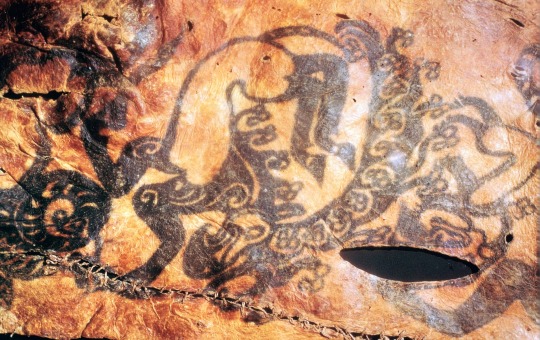
Beasts tattooed on the arm of a Scythian child whose body—which dates back to the 5th century B.C.—was found in the Altai region of Russia. Archaeologists believe this culture's tattoos reflect age and social status. Photograph By CM Doxon, Print Colector/Getty Images
Tattoos in Ancient Eastern Europe
Members of the Catacomb culture in Eastern Europe from around 2600 to 2400 B.C. also had tattoos. Their mummified remains, found near the Sea of Azov in what is now Russia, bore plant-dye tattoos representing snakes that researchers believe were part of “sympathetic magic” practices and social roles.
Animal tattoos have also been found on the bodies of members of the Pazyryk culture, which emerged during the Scythians’ domination of what is now Russia between the sixth and second centuries B.C. These Iron-Age nomads lived in the Altai Mountains and depended on horses to live, and even die—they were buried alongside their horses, as in the case of an ice-preserved woman discovered in 1993 alongside six bridled and saddled horses. The high-status woman, along with other buried Pazyryk people, was covered in tattoos of complex horse motifs.
Some researchers believe the tattoos reflected age and social status, meaning that as one gained both they also got more and more ink. Psychology and animal studies specialist Gala Argent posits that the tattoos signified a personal connection to individual horses, and that they provide important evidence about how humans and horses interacted when they were alive.
Tattoos in Ancient Asia
Despite modern-day tattoo stigma in China, a variety of ancient cultures across Asia embraced the practice.
In China’s Tarim Basin, for example, the discovery of mummified bodies dating from between 2100 and 800 B.C. shows the prevalence of tattoos across a variety of cultures from the area. Most of those tattoos are located on the mummies’ hands, but tattoo historian Svetlana Pankova notes that a few have face tattoos. She has called for more research on the Tarim tattoos, claiming that with a re-examination of these bodies, “it is likely that many new tattoo discoveries will be made.”

A Scythian mummy displayed at the Martin-Gropius-Bau exhibition hall in Berlin. Mummification preserved the striking tattoo visible across the man's right shoulder. Photograph By Axel Schmidt, DDP/AFP/Getty Images
Tattoos in Oceania
Despite the Tahitian origin of the word “tattoo,” archaeologists have found relatively little evidence of tattooing from ancient Polynesia—the tropics’ warm, wet weather doesn’t lend itself well to mummification. In 2019, researchers identified a set of tattoo tools made of human bone thought to date from the dawn of Polynesian culture in what is now Tonga around 2,700 years ago.
But scholars still aren't sure what kinds of motifs were preferred by ancient Polynesians or what the markings meant to Polynesians, speculating that they could have indicated belonging to a particular social group, rites of passage, or a desire to be protected from harm.
As French art historian Luc Renaut explains in an essay in Ancient Ink: The Archaeology of Tattooing, representations of “possibly tattooed” figures in ancient artworks offer a tantalizing view of even earlier tattooing practices. But “few survive close scrutiny,” and ancient artistic styles cannot reliably be interpreted as portraying real-life tattoos.
That, along with a dearth of mummy evidence older than Ötzi, suggests that the true history of tattooing may never be fully uncovered. In the meantime, though, there’s plenty of ink to look for—and more to learn about a truly ancient practice.
#Ancient History of Tatoos#Western Europe#Ancient Egypt 🇪🇬#The Americas 🇺🇸#Eastern Europe#Ancient Asia#Oceana
7 notes
·
View notes
Text

one of my old works
4 notes
·
View notes
Text
Just updated!
George Harrison is trapped in a monastery in ancient China. He has been tasked to follow a cricket.
#the beatles#ao3 fanfic#ao3 beatles#ao3 fanfiction#george harrison#beatles halloween#the lost is found#time travel#ancient asia#ancient china#chess#magic#a beatle chasing a cricket#cricket#funny#cute#unique#unusual story#ao3 series#ao3 link#ao3feed#ao3 author#ao3 community#ao3 comments#ao3 fic#writers on ao3#read on ao3#ao3fic#ao3 kudos#ao3 update
0 notes
Text

BAYON TEMPLE - Ancient City of Angkor in CAMBODIA
782 notes
·
View notes
Text
Time Travel Question 61: Middle Ages and Much Earlier
These Questions are the result of suggestions from the previous iteration.
This category may include suggestions made too late to fall into the correct grouping.
Please add new suggestions below if you have them for future consideration.
#Time Travel#Mastodons#Megafauna#Triceratops#Dinosaurs#Pre-History#Dimetrodons#Saber-toothed Cats#Smilodon#Chinggis Khan#Genghis Khan#Mongols#Temüjin#Mongolian History#13th Century#Medieval History#Middle Ages#Athens#Ancient World#Canaanites#Ancient Religions#History of Religion#West Asia#Denisovans#Homins#Paleolithic#Prehistory#The Ghana Empire#Ghana#Ghanata
318 notes
·
View notes
Text

Petra - Jordan (by Anna Jewels (@earthpeek))
https://www.instagram.com/earthpeek/
#Petra#Jordan#Jordanien#Asia#Asien#Landmark#Old#Historic#Ancient#Sight#Sightseeing#Photography#Travelling#Traveling#Travel#Tourism#Holiday#Urlaub#Reisen#Vacation
2K notes
·
View notes
Text


Guanyin of the Southern Sea
A wood statue of the Chinese-Buddhist deity Guanyin. Made during the Liao (916–1125) or Jin (1115–1234) dynasty.
It’s currently located in The Nelson-Atkins Museum of Art, Kansas City, Missouri.
#china#chinese culture#chinese history#east asia#Buddhism#Chinese Buddhism#zen buddhism#guanyin#museum#artifact#wood statues#statues#Buddhist deity#medieval china#ancient china
698 notes
·
View notes
Text
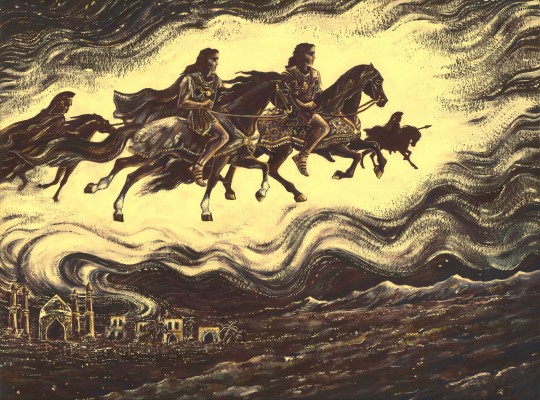
Spirits of ancient battles. Memories of Alexander the Great (2023/2024)
Gouache version of the work from 2017: https://www.tumblr.com/marysmirages/686070565494259712/spirits-of-ancient-battles-memories-of-alexander?source=share
#alexanderthegreat#hephaestion#hephaistion#alexander of macedon#marysmirages#asia#ancient greek mythology#painting#art#horse#rider#mirage#oasis#persia
483 notes
·
View notes
Text







Walls of Palace of the Governor in Ҳулбук / Hulbuk / Khulbuk ( Tajikistan )
#photooftheday#travelphotography#adventure#aroundtheworld#silk road#marco polo#pickoftheday#explore#palace#travel#discovertajikistan#tajikistanculture#history#ancient#fortress#heritage#architecture#pamir highway#castle#tajikistantravel#tajikistan#old castle#hulbuk#tajikistanhistory#central asia
74 notes
·
View notes
Text
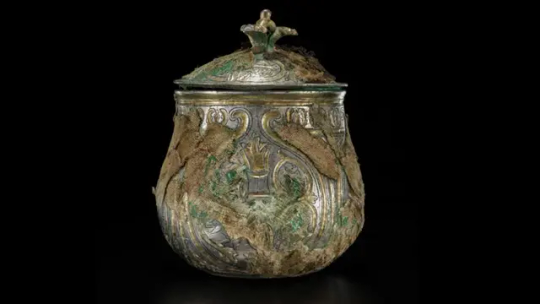
Viking-age Treasure Came to Scotland From West Asia
Ten years on from the discovery of the Viking-age Galloway Hoard in south Scotland, experts have revealed that part of the collection came from West Asia.
The collection - described as one of the most important UK archaeological finds of the century - was found by metal detectorist Derek McLennan in 2014.
A lidded silver vessel was discovered still wrapped in its ancient textiles, which is extremely rare, and meant that the surface of the vessel could at first only be seen through X-ray scans.
Experts say the vessel is originally from what is now central Iran and it was transported halfway around the world more than 1,000 years ago. The vessel was found to contain other treasures, like silk and brooches.
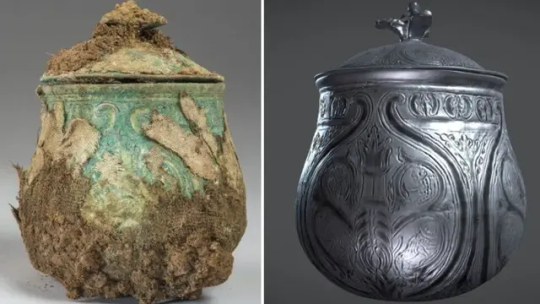

Its textiles have now been partially removed and preserved, and the vessel has been cleaned using lasers which removed any green corrosion and revealed details of the design, including crowns, fire altars, leopards and tigers.
This imagery is unusual in western Europe but it is linked with the iconography of Zoroastrianism, the state religion of the Sasanian Empire which was the last Persian empire before the early Muslim conquests from 632AD.
The hoard - which contained more than 5kg of silver, gold and other materials - was discovered on what is now Church of Scotland land near Balmaghie in the historical county of Kirkcudbrightshire.
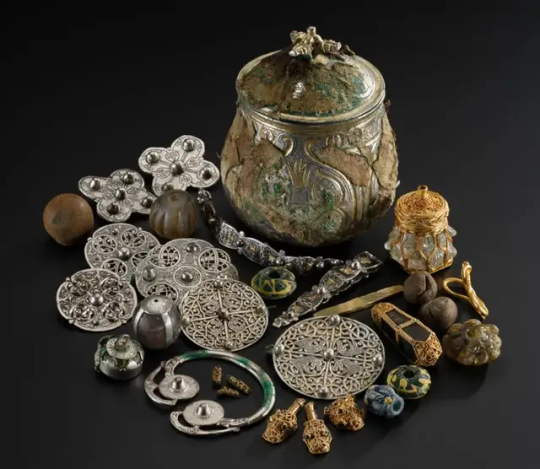

Dr Martin Goldberg from the National Museums Scotland said the vessel was "further evidence of the cosmopolitan make-up of the Galloway Hoard".
He said: "We now know that the Viking-age silver that makes up most of the Hoard was melted down from coins and metalwork from early medieval England.
"Some objects, like the lidded vessel, stood out from the rest and the scientific analysis now confirms this.
"It is incredible to imagine how the vessel made its journey halfway round the known world, from Iran to this distant corner of southwest Scotland.”
The artefact from about 900AD is set to go on public display for the first time next week, on loan to the British Museum’s upcoming Silk Roads exhibition in London.
Other objects from the Galloway Hoard will go on long-term display at the National Museum of Scotland in Edinburgh, while a portion will go on show at Kirkcudbright Galleries.
Dr Sue Brunning, from the British Museum, said: "We're delighted that visitors to Silk Roads will be the first in the world to see this key object from the Galloway Hoard.
"Among its remarkable contents were Scotland's earliest recorded silk, and so it is a highly appropriate inclusion in the exhibition."
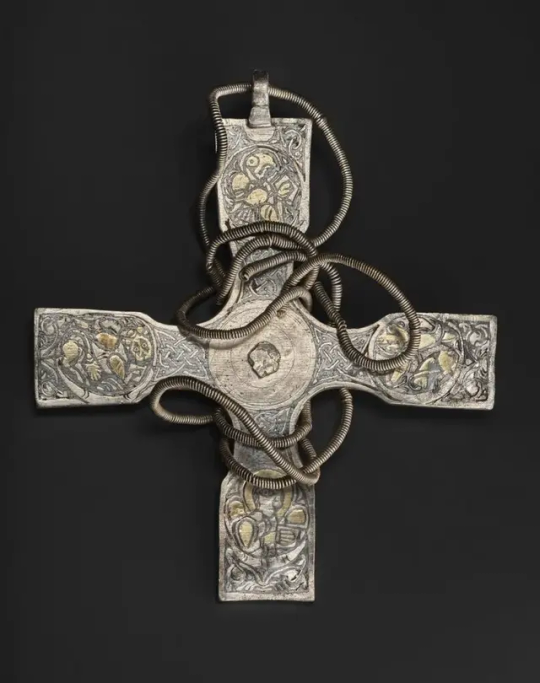
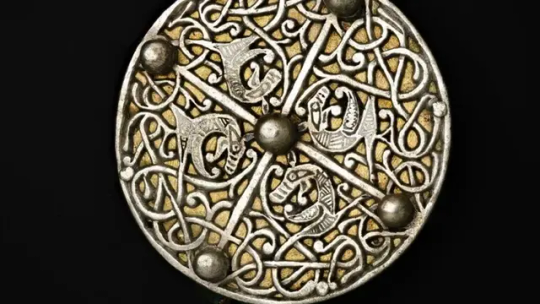
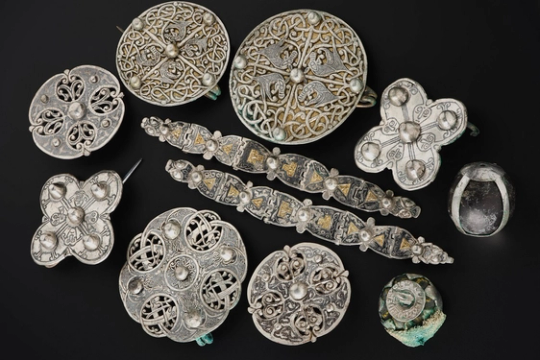
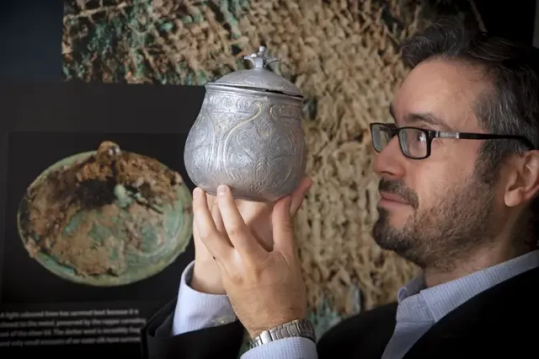
#Viking-age Treasure Came to Scotland From West Asia#Viking-age Galloway Hoard#idded silver vessel#silver#ancient artifacts#archeology#archeolgst#history#history news#ancient history#ancient culture#ancient civilizations#viking age#viking art
93 notes
·
View notes
Text

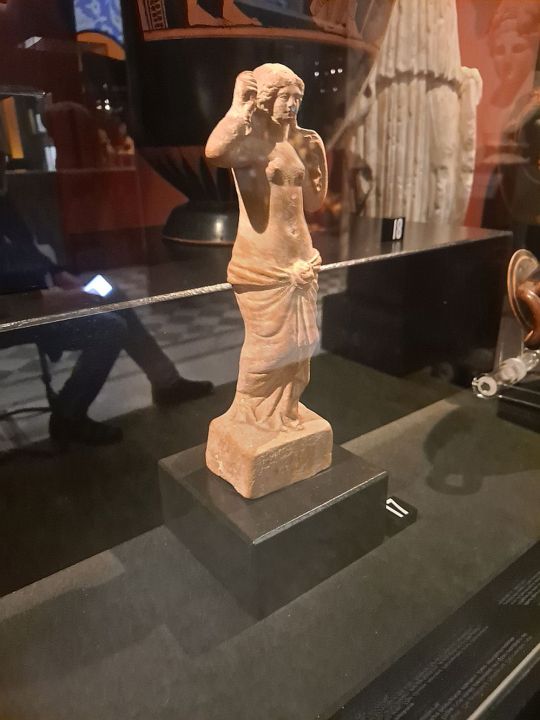

Aphrodite
* Asia Minor
* 300-100 BCE
* terracotta
* Medelhavsmuseet, Stockholm
Stockholm, November 2023
#Aphrodite#goddess#ancient#Greek#art#terracotta#statuette#2nd century BCE#3rd century BCE#Asia Minor#Medelhavsmuseet Stockhom#Swedish Museums#my photo
229 notes
·
View notes